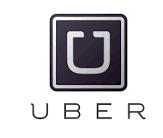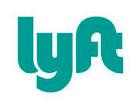Court Says Uber and Lyft Drivers May be Employees
 Drivers for Uber and Lyft claimed they are employees, not independent contractors. Two different judges hearing these cases both held that factual questions preclude summary judgment in favor of Uber and Lyft. As Judge Chhabria, who is hearing the Lyft dispute, notes, “[w]hether a worker is classified as an employee or an independent contractor has great consequences.”
Drivers for Uber and Lyft claimed they are employees, not independent contractors. Two different judges hearing these cases both held that factual questions preclude summary judgment in favor of Uber and Lyft. As Judge Chhabria, who is hearing the Lyft dispute, notes, “[w]hether a worker is classified as an employee or an independent contractor has great consequences.”
The courts both run through the independent contractor/employee test, which first look to whether the plaintiff is providing services to the putative employer (answer in both cases: yes). This raises a presumption of employee status, which can be dispelled by showing that the putative employer cannot control the manner and details of the work. Along with this, courts also consider several additional factors:
(a) whether the one performing services is engaged in a distinct occupation or business; (b) the kind of occupation, with reference to whether, in the locality, the work is usually done under the direction of the principal or by a specialist without supervision; (c) the skill required in the particular occupation; (d) whether the principal or the worker supplies the instrumentalities, tools, and the place of work for the person doing the work; (e) the length of time for which the services are to be performed; (f) the method of payment, whether by the time or by the job; (g) whether or not the work is a part of the regular business of the principal; and (h) whether or not the parties believe they are creating the relationship of employer-employee.
Both courts point to the extent of control the companies exert over their drivers. It’s not determinative that the companies’ strictures are couched as “suggestions”:
[Lyft:] Lyft instructed the plaintiffs . . . not to do a number of things—not to talk on the phone with a passenger present, not to pick up non-Lyft passengers, not to have anyone else in the car, not to request tips, not to smoke or to allow the car to smell like smoke, and not to ask for a passenger’s contact information. Lyft also affirmatively instructed the plaintiffs to do a number of things—to wash and vacuum the car once a week, to greet passengers with a smile and a fist-bump, to ask passengers what type of music they’d like to hear, to offer passengers a cell phone charge, and to use the route given by a GPS navigation system if the passenger does not have a preference.
[Uber:] Plaintiffs cite numerous documents, written in the language of command, that instruct drivers to, amongst other things: “make sure you are dressed professionally;” send the client a text message when 1-2 minutes from the pickup location (“This is VERY IMPORTANT”); “make sure the radio is off or on soft jazz or NPR;” and “make sure to open the door for your client.” Onboarding Script at 3-6. As Uber emphasizes, “it is the small details that make for an excellent trip,” and Plaintiffs have presented evidence (when viewed in the light most favorable to them) that Uber seeks to control these details right down to whether drivers “have an umbrella in [their] car for clients to be dry until they get in your car or after they get out.”
 Among other things, the courts point to the fact that elsewhere in website materials, the companies couch these as something other than suggestions. And in practice, the companies enforced violations of these standards. In any event, they reserved the right to broadly terminate or suspend drivers for failing to comply with their litany of requirements.
Among other things, the courts point to the fact that elsewhere in website materials, the companies couch these as something other than suggestions. And in practice, the companies enforced violations of these standards. In any event, they reserved the right to broadly terminate or suspend drivers for failing to comply with their litany of requirements.
To be sure, the courts both say that some factors are equivocal or favor Uber and Lyft (e.g., the fact that drivers supply their own cars, work their own hours, even subcontract some of their services). And in many respects the control is exercised indirectly, through customer feedback. But both judges say that the evidence does not point to the indisputable conclusion that the drivers are independent contractors. Thus, the case proceeds to trial.
Finally, both judges acknowledge that the applicable test may not be well-suited for application to sharing economy companies, but say the matter is out of the courts’ hands:
The application of the traditional test of employment—a test which evolved under an economic model very different from the new “sharing economy”—to Uber’s business model creates significant challenges….It is conceivable that the legislature would enact rules particular to the new so-called “sharing economy.” Until then, [the court] is tasked with applying the traditional multifactor test . . .
__
Most interestingly, both judges were completely unreceptive to Uber’s and Lyft’s arguments that they are merely platform/technology companies and not car companies. The judges characterized this argument as “fatally flawed” and “obviously wrong.” Interestingly, neither court gave much credence to the idea that Uber or Lyft was not the one evaluating drivers; the passengers are the ones who rate drivers and ultimately determine whether a driver is terminated.
While the characterization as a platform is consequential to the employee/independent contractor analysis, it will likely come up again in another scenario that will affect the ability of these companies to push back on consumer personal injury claims: the viability of Section 230 as a defense. Companies have historically taken advantage of that defense to avoid claims when users suffer harms at the hands of other users (MySpace; craigslist; Facebook). But the applicability of this defense to sharing economy companies is less certain. Among other things, the extensive marketing (as a service rather than a platform), screening, and logistical involvement by the sharing economy companies may make it tougher for these companies to argue that they are mere intermediaries of information whose platform facilitated user solicitations and responses that ultimately resulted in injury (for which they cannot be held responsible). It’s tough to say whether a court looking at a possible Section 230 defense would take the same approach as the court does here.
The Ninth Circuit recently granted re-hearing in the Model Mayhem case, where it originally endorsed a failure to warn theory as not being subject to Section 230. Along with that case, this is another one that is worth closely watching for sharing economy participants.
__
Eric’s Comments:
* Outmoded Laws. The laws purporting to distinguish between employees and independent contractors are a disaster. The doctrinal tests are worthless. For example, the IRS test has 20 factors, which is not really different than having no factors at all.
Worse, different legal regulations have different multi-factor tests for making the employee/independent contractor distinction. For example, copyright law, wage & hour law, unemployment insurance law and federal income tax law all use different factors in their multi-factor tests. This means that it’s conceivable a person could be an employee under some of the tests and an independent contractor under other tests. What a mess. If I were dictator for a day, adopting a single standardized test for employee vs. independent contractor would be high on my to-do list.
Worst of all, taxonomizing labor services into “employee” or “independent contractor” is, in my opinion, archaic and outmoded. As the Lyft judge aptly explained:
the jury in this case will be handed a square peg and asked to choose between two round holes. The test the California courts have developed over the 20th Century for classifying workers isn’t very helpful in addressing this 21st Century problem.
As the Internet makes labor markets more efficient, we’ve seen a proliferation of ways to deliver valuable services that don’t fit neatly into the employee vs. independent contractor buckets, e.g., oDesk/TaskRabbit/Mechanical Turk; Lyft/Uber; open source/wiki contributions; and UGC moderators. We really ought to take a step back and question why we need to force people into these buckets (and examine the transaction costs required to create and enforce the taxonomization).
For more on these issues, see my 2009 blog post, Zittrain on the Dark Sides of Crowdsourcing.
* Vendor Guidelines. As Venkat indicates, the judges in both cases hammered on the fact that Lyft and Uber provide detailed performance instructions to their drivers and then penalize non-compliance. I understand why the judges did this, but did Lyft/Uber have any other realistic choice? In their role as marketplace operators, they want their buyers to trust that driver-vendors will provide quality services. Indeed, we as a society WANT Lyft and Uber to use their market-making role to improve the marketplace offerings. Everyone wins because Lyft and Uber have driver guidelines and enforce those guidelines (except for any anti-competitive guidelines, and I thought a few might have veered in that direction). Given that, it would be counterproductive to legally punish Lyft/Uber for improving the service offerings in their marketplaces; yet, in a sense, that’s exactly what the employment classification would do.
* What if Lyft/Uber Embrace Drivers-as-Employees? The judges’ rulings suggest a bleak outlook for Lyft and Uber in these cases. Having lost their “platform”/marketplace argument and getting hammered for their detailed driver guidelines, Lyft and Uber can’t feel good about going into a jury trial.
My initial reaction was that losing this case would be cataclysmic for Lyft and Uber. They surely can’t handle the responsibilities for treating every driver as an employee, could they? But on reflection, I think not only is the “employee” outcome likely, but it’s really not that bad for them. Lyft and Uber already have a lot of supervision over drivers and contact with them; they are already heavily regulated in many aspects of their business; they already imply or promise drivers that they will earn hourly payouts that exceed minimum wage; and they both have a boatload of cash in the bank. Could they survive having drivers treated as employees? Yes, and in fact, in the end that’s probably the only viable outcome under current law.
As Venkat discusses, if drivers are employees, then Lyft and Uber will potentially have full exposure for any personal injuries that drivers cause or suffer. (As employees, Section 230 presumptively isn’t likely to apply). Again, this sounds really scary, but this is an insurable risk. I don’t know how much the insurance costs will increase if Lyft/Uber are fully liable for these risks, but I do know that the insurance markets for commercial drivers are well-developed.
In the end, unless state legislatures intervene on Lyft/Uber’s behalf, I think it’s inevitable that drivers will be their employees. The compliance and insurance costs will probably mean that consumers will have to pay more for their services, so the net effect is that consumer costs will go up and we’ll get little social benefit in return. That kind of social loss is another good reason for us to really rethink the employee/independent contractor taxonomy.
Case Citations:
Cotter v. Lyft, 13-cv-04065-VC (N.D. Cal. Mar. 11, 2015)
O’Connor v. Uber Techs., C-13-3826 EMC (N.D. Cal. Mar. 11, 2015)
Related posts:
Section 230 Doesn’t Protect Employer From Negligent Supervision Claim–Lansing v. Southwest Airlines
Employer Gets Section 230 Immunity For Employee’s Posts–Miller v. FedEx
Employer Not Liable for Employee’s Threatening Emails Per 47 USC 230–Delfino v. Agilent
Employee Wins Harassment Claim Based in Part on Co-Workers’ Offsite Blog Posts–Espinoza v. Orange
Hertz Faces Negligence Suit For Employee’s Facebook Bashing of a Customer–Howard v. Hertz
